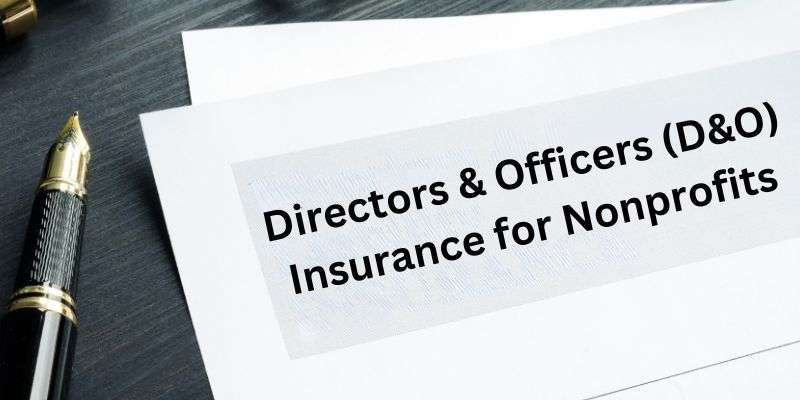Running a nonprofit is a great effort, but it comes with its own challenges and risks. An important aspect often overlooked is insurance, especially director and officer (D&O) insurance. This type of insurance is necessary to protect nonprofit leaders from personal liability and ensure the organization’s stability. Let’s consider why D&O insurance is important to nonprofits and how it can protect your organization.
What is D&O Insurance?
Definition and Purpose
Director and officer (D&O) insurance is a liability insurance policy designed to protect the personal assets of directors and officers of a company or nonprofit organization. Includes legal fees, settlements, and other costs arising from lawsuits or claims made against them as leaders.
Key Coverage Areas
D&O insurance typically covers:
- Legal Defense Costs: Fees for lawyers and court expenses.
- Settlements and Judgments: Financial settlements from lawsuits.
- Regulatory Investigations: Costs associated with investigations by regulatory bodies.
Why Nonprofits Need D&O Insurance
Legal Risks and Responsibilities
Nonprofit directors and officers must act in the best interests of the organization. He can be held personally liable for any misconduct, negligence, or failure to follow rules. D&O reduces these risks by providing an insurance safety net.
Protection for Directors and Officers
Without D&O insurance, directors and officers hesitate to make important decisions for fear of personal financial loss. This insurance ensures they can perform their duties without constantly worrying about possible legal implications.
Common Risks Faced by Nonprofits
Employment Practices
Nonprofits, like any other organization, can face claims related to hiring practices. These include wrongful dismissal, discrimination, and harassment claims, which can be costly to defend and settle.
Fiduciary Duties
Directors and officers responsibly manage the organization’s funds. Mismanagement or breach of fiduciary duty could give rise to legal actions, endangering their personal property.
Regulatory Compliance
Nonprofits are subject to various rules and laws. Failure to comply with them could result in an investigation and conviction. D&O insurance helps cover costs associated with defense against such claims.
Key Benefits of D&O Insurance for Nonprofits
Financial Protection
One main benefit of D&O insurance is financial security. It covers costs associated with legal defense, settlements, and decisions, ensuring a nonprofit’s funds are safe for its mission.
Legal Defense Coverage
A legal battle can be long and costly. D&O insurance provides resources needed to defend against litigation, giving directors and officers peace of mind.
Peace of Mind for Board Members
Knowing they’re protected by D&O insurance, board members can focus on their role without constant fear of personal financial loss. This assurance attracts talented people to serve on board.
How D&O Insurance Works
Policy Structure
D&O insurance policies are designed to cover three main areas:
- Side A coverage: Protects individual directors and officers when the organization cannot compensate them.
- Side B coverage: compensates the organization when it compensates directors and officers.
- Side C coverage: Covers itself for claims made against the organization.
Claims Process
When a claim is made, the insured must notify the insurer. The insurer then reviews the claim and provides legal defense if covered. The insurer pays for decisions up to legal fees, settlements, or policy limits, if the claim is valid.
Coverage Limits and Exclusions
Policies have a coverage limit, the maximum amount the insurer pays for a claim. Exclusion defines what is not covered, such as fraud or personal gain.
Types of D&O Insurance Policies
Standalone D&O Policies
These are dedicated D&O insurance policies that provide comprehensive coverage, especially for directors and officers.
Combined Policies with General Liability Insurance
Some nonprofits choose general policies, including general liability and D&O insurance. While simple, it’s important to make sure D&O coverage is adequate.
Specialized Policies for Nonprofits
Some insurers offer policies tailored to the specific needs of nonprofits, offering more relevant coverage and benefits.
Choosing the Right D&O Insurance Policy

Assessing Your Nonprofit’s Needs
Review your nonprofit’s size, scope, and activities to determine the level of coverage needed. Consider the number of directors and officers and the nature of potential threats.
Comparing Different Providers
Research different insurance providers, and compare their offers, reviews, and customer reviews. Find insurers with experience in the nonprofit sector.
Understanding Policy Terms and Conditions
Carefully review policy terms, conditions, and exclusions. Make sure you understand what’s covered and what’s not, and ask the insurer for clarification if necessary.
Cost of D&O Insurance for Nonprofits
Factors Influencing Premiums
Several factors affect the cost of D&O insurance, including:
- Organization size: Large nonprofits could face higher premiums.
- Income: Higher income can increase premiums.
- Claim history: Claim history could raise premiums.
- Coverage range: A higher range results in a higher premium.
Average Costs
D&O insurance premiums can vary widely. On average, small nonprofits can pay between $500 and $1,500 per year, while large organizations can see premiums of $2,000 to $5,000 or more.
Tips for Reducing Premiums
- Maintain clean claims history: Avoid repeated claims to keep premiums low.
- Bundle policies: Consider bundling D&O insurance with other policies for discounts.
- Review regularly and adjust coverage: Make sure coverage matches existing requirements to avoid paying unnecessary limits.
Steps to Obtain D&O Insurance
Gathering Necessary Information
Collect relevant information about your nonprofit, including financial statements, governance structures, and history of past claims.
Requesting Quotes
Reach multiple insurance providers for quotes. Provide accurate information to get accurate estimates.
Evaluating and Selecting a Policy
Compare quotes, coverage options, and policy terms. Choose a policy that best meets your nonprofit’s needs and budget.
Maintaining and Reviewing Your D&O Insurance
Regular Policy Reviews
Review your D&O insurance policy regularly to ensure it keeps meeting your nonprofit’s needs.
Updating Coverage as Needed
Update your coverage to reflect new risks and responsibilities as your nonprofit grows and evolves.
Ensuring Compliance with Policy Requirements
Follow policy requirements and keep documents up to date to avoid any issues with claims.
Real-Life Examples of D&O Claims in Nonprofits
Case Studies
- Employment Practices Liability: A nonprofit faced a wrongful termination lawsuit. D&O insurance covers legal defense and settlement costs.
- Regulatory investigation: A nonprofit organization investigated for non-compliance with fundraising rules. D&O insurance helped cover legal costs.
Lessons Learned
These examples highlight the importance of D&O insurance in protecting nonprofits from significant financial losses and legal challenges.
Conclusion
D&O insurance is an essential protection for nonprofits, protects directors and officers from personal liability, and ensures organization stability. By understanding the importance of D&O insurance, evaluating your nonprofit needs, and choosing the right policy, you can secure peace of mind and focus on your mission.
Discover the significance of budgeting and why it’s crucial for financial stability in our comprehensive guide: WHAT IS BUDGETING AND WHY IS IT IMPORTANT?

